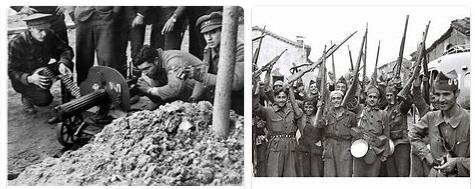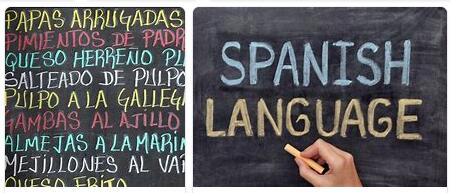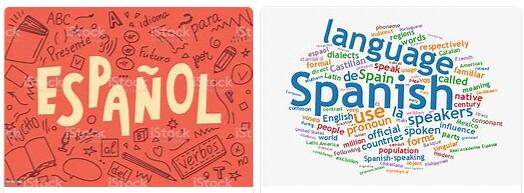The Battle of Jarama and Guadalajara. – Occupied Malaga, General Franco’s troops resumed operations in the central sector, launching two successive offensives south and north-east of Madrid. The first (6-27 February), entrusted to General Varela, allowed the attackers to reach and cross the Jarama line. With the second offensive, which started from the region of Siguenza and conducted almost exclusively by Italian legionary troops, including the motorized columns returning from…
Read MoreSpain Military Operations During the Civil War Part I
The military revolt which began on July 18, 1936 in the Canary Islands immediately spread to Morocco in the Balearics and mainland Spain; while, however, in Morocco and in the Balearics it managed to have the complete upper hand over the government forces, with the exception of the island of Menorca, on the continent it could not be affirmed that in two vast areas, constituted in the north by western…
Read MoreSpanish Languages Part V
Non-Latin elements. – The Romanization of Spain did not extinguish indigenous languages; but as these are almost entirely unknown, the critique of the elements derived from them in Castilian in a primitive age is very difficult. Even the words that the Latin authors indicate as Spanish are questionable. Instead, many cases of the influence of Basque and related Iberian languages on Castilian could be pointed out. Since these languages almost…
Read MoreSpanish Languages Part IV
It should also be noted that the novel kept some perfect strong Latin, those that had the accent on the subject (DIXI) and not on the ending (sang): dixi, dije ; feces, hice ; habui, hube ; but in general he weakened the perfect forts on the usual model accented on the ending: tímui, temí ; worthy, worthy ; arsi, ardí, etc. Similarly the strong participas dictu, dicho ; factu,…
Read MoreSpanish Languages Part III
According to SUNGLASSESTRACKER.COM, the Latin deaf occlusive consonants, when they were in the intervocalic position, allowed themselves to be influenced by the sonority of the immediate vowels and became sonorized: vita, vida ; securu, seguro. The voiceless fricatives also became voiced, and so the f changed to the corresponding voiced v or b: profectu, provecho ; Stephanos, Esteban. The intervocalic voiced stops tend to disappear: laudat, loa (but the d…
Read MoreSpanish Languages Part II
We indicate the main ones: a) Occlusive: two bilabial p and b, two dental t and d, and two velar k and g. In writing, the two signs b and v are used according to the etymology of the words, but they represent exactly the same sound; for k and g we use, according to the vowel that follows, ca and que, ga and gue. It should be noted that…
Read MoreSpanish Languages Part I
The languages currently spoken in the Iberian Peninsula are divided into two groups of different origins and of very unequal extension; the one is formed by the Basque (see Baschi: Lingua), a leftover of one of the primitive languages of Spain, the other composed of various related languages: Galician-Portuguese in O., Catalan-Valencian in E., and, in the center, various dialects very similar to each other, designated by name of Castilian,…
Read MoreSpain Music from 18th to 20th Century
According to SHOEFRANTICS.COM, the century XVIII for Spanish music represents an era of transition. This century is an era of struggle between composers who wished to move forward and break away from the artistic theory dogmatized by Cerone and Navarro, and others, less artists, who were reduced to continuing the traditional path. However, we must not forget the fact that they strove with talent and valor in order to be…
Read MoreSpain Music – Polyphony of the 16th – 17th Century
The Spanish polyphony of the century. XVI (with the exception of the works of musicians who passed through Italy, Flanders, Austria, etc., as singers and chapel masters) rarely reached the press. This is the main cause of the irreparable loss of much of Spanish classical music. The Spanish musicians passed especially in Italy, thanks to the existence in Rome of the papal chapel, which center – until Callisto III –…
Read MoreSpain Music from Middle Ages to 16th Century
Musical lyric in the vernacular in the Middle Ages. – During the 12th and 13th centuries, Provençal and Catalan troubadours invaded the cities and courts of the kings of the various Spanish countries. To limit ourselves to the troubadours of which we have preserved some melodies, we must mention Marcabru, Peire Vidal, Peire Ramon of Toulouse the Elder, Peire d’Alvergne, Arnaut Daniel, Raimbaut de Vaqueiras, the monk of Montaudon, Arnaut…
Read More








